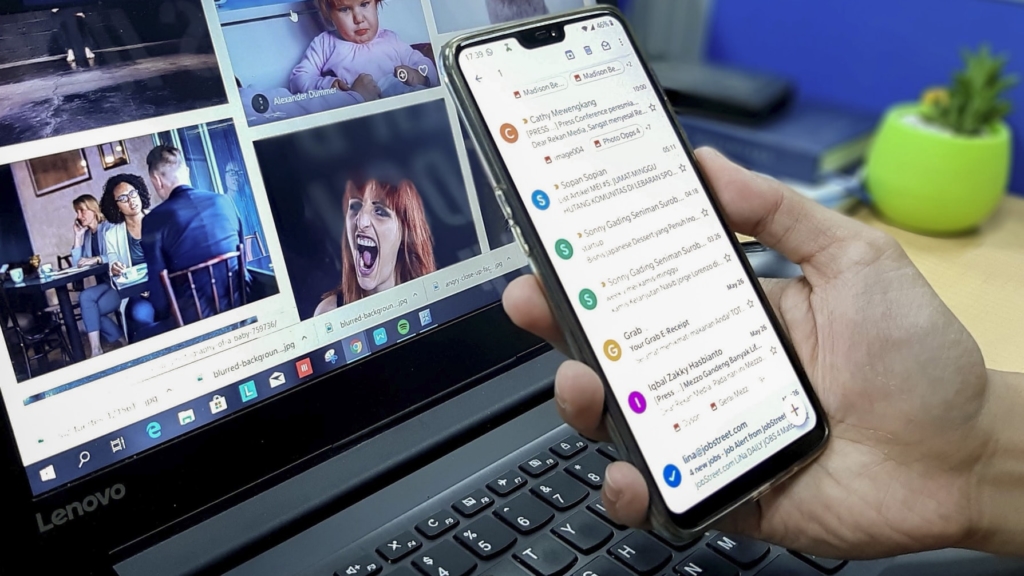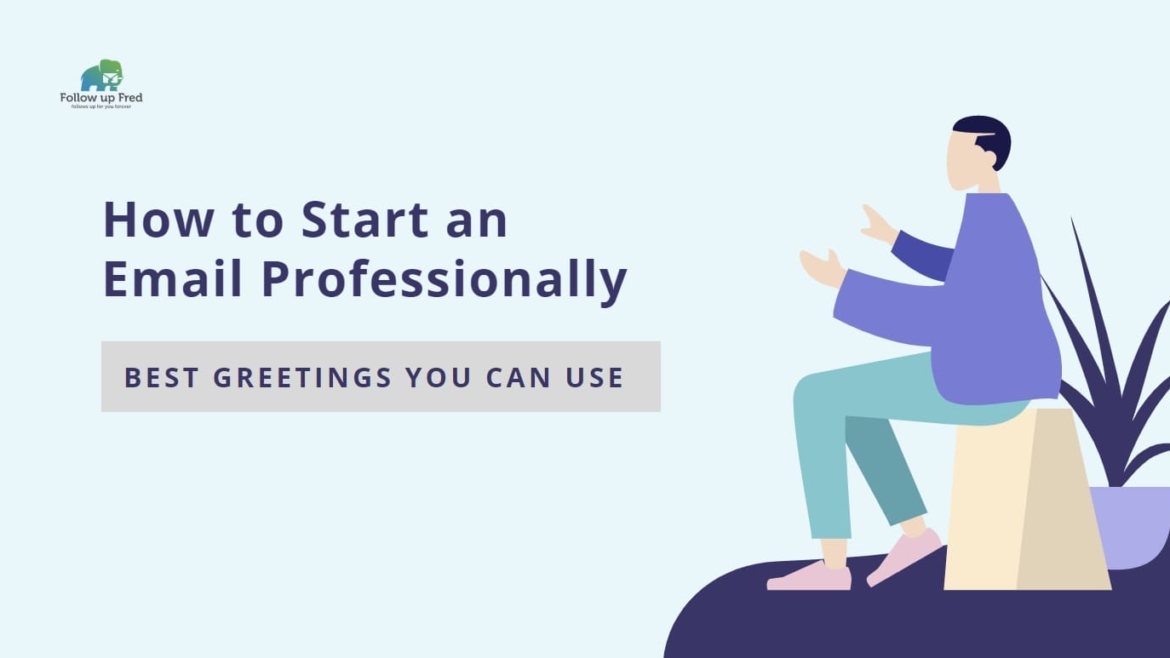It’s common wisdom that you only get one chance to make a first impression. Many people in the business world put a lot of stock into a firm handshake and a confident, professional introduction. You can be the world’s greatest expert in your field, but making a good impression is key to getting the opportunity to prove it. Knowing how to start an email is the online equivalent of a firm handshake and confident greeting. Let’s find out best greetings you can use in the email follow-up extension.
What to Consider for a Perfect Email Opening?
Your introduction or opening line is critically important in a professional email for much the same reason. A strong, professional beginning is your ‘first impression’ and can be the difference between your email being read and carefully considered, or summarily archived. Let’s talk about professional email greetings and how to start an email for maximum effectiveness.
Why are email greetings important?
Greetings for emails aren’t really too hard to figure out. The first thing to consider is who you’re writing to, and what your purpose is for contacting them.
If you’re emailing the CEO of your company, you probably want to start off with a formal email greeting, If you’re emailing the guy in the next cubicle that you play pool with after work, you can obviously be very informal. And there’s a whole spectrum in-between, but we’ll provide you with some samples here. Trust your gut, but when in doubt, it’s usually better to err on the side of formality. Also, don’t forget to end your emails correctly.
Rapport and relationship matter. Generally, you should be formal with clients, but with a long-time client that you know well, it may be off-putting to be overly formal. Then again, you also know their preferences; some people prefer formality, especially in business. Though generally, you can figure out formal writing rules easily using common sense, sometimes business communication can be tricky and helpful hints might come in handy.
Define a Purpose of the Email
Start with “Why”. Your purpose for writing should also be considered. No matter how close you are with the recipient, if you’re a mechanic emailing them to tell them you totaled their car while test driving it, you probably want to be formal. If you’re writing to let your boss know you just closed the biggest sales deal of the year, it’s ok to let some excitement shine through. Both of these factors influence each other in establishing a tone.

Best Practices for Writing a Professional Email
It’s important to remember that the average American worker receives over 140 business emails per day, and that’s without counting spam or ‘cold call’ emails. If we all carefully read and consider every email, none of us would ever get any work done! I know that if the opening of an email makes me think the rest will be a waste of time, I archive it without even bothering to read the rest, and that’s not uncommon.
A good start in your business email greeting includes the following components:
- Appropriate salutation
- An opening paragraph that states (in some form, unless these factors are already known by the recipient):
- Who you are
- The purpose of your email
- The value proposition to the recipient (what good does it do them to read your email?)
Some best practices to consider include:
- Be Concise
You want to hit the points listed above, but if you write too much, most people aren’t going to make it past the opening.
- Use Correct Spelling and Grammar
This goes for your entire email, but especially your opening: make sure your spelling and grammar are correct! You don’t have to be good at grammar; browser extensions such as Grammarly can auto-check your spelling and grammar as you type and suggest corrections, so there’s never a reason to send an error-ridden email.
- Have a Strong and Appropriate Salutation
A good salutation won’t make a huge difference, but a bad one will be an instant turn-off for many people. If in doubt, stick to a formal, classic salutation. A unique and personal salutation can be a part of your personal brand, but unless you’re very confident in your audience and rapport, it’s probably not worth the recipient thinking your salutation is unprofessional or too familiar.
- Personalize
Use software tools to insert personal info such as names even when you’re sending out a large batch of emails. Using people’s names and avoiding the appearance of a ‘form letter’ is important and your opening is a great place to insert a reference that will build rapport and relationships. Whether you do this formally (Dear Mr. Jones) or informally (Dear Bob) depends on your relationship, rapport, and purpose for emailing.
However, and we can’t emphasize this enough if you’re utilizing CRM software to insert names, make sure names are spelled correctly in your database. If you’re typing it, make sure you type it correctly. For many, a misspelled name is an automatic reason to stop reading. It’s rude and unprofessional.
- Where Applicable, Show Personality
When you can get away with anything less than a rigid formality, showing a little personality can interest your reader enough to draw them in and help ensure they read your whole email. However, you still need to be concise.
- Research
If you’re emailing someone you don’t know well, don’t be afraid to use sites like LinkedIn to do some research. For example, when I worked for a non-profit, I was asked to email a prospective new major donor to fill him in on some of our ongoing programs. His LinkedIn showed we had attended the same small college several states away. I worked into my opening that we had a shared alma mater, and he not only read the email, but he also called the office to chat with me about it. The next week, he wrote a $50,000 check to my organization.
- Formatting
When I open an email and see a dense, unending block of text, it goes to the bottom of my ‘to-read’ pile so I can answer the ones that are concise and quick to read. Break up your opening into no more than a 2-3 line paragraph and make sure there’s enough white space to avoid ‘wall of text’ syndrome.
- Tone
This plays into the ‘audience and purpose’ factor; you’re not only setting the tone for your whole email, but you’re also taking a step in shaping the relationship between yourself and the recipient.
- Content Table-Setting
While most of the ‘meat’ of your email will be in the body, you can use the opening to ‘set the table’ and give the recipient an idea of what to expect. This helps build value for reading the rest of your email.
Salubrious Salutations
As noted above, a good salutation shouldn’t and probably won’t be noticeable, but a bad one will leave a poor taste in your recipient’s mouth. It’s important to use a professional salutation simply to avoid an awkward beginning to your email.
Formal:
- Greetings
- Dear [Mr. / Mrs. / Ms. / Dr. [last name]
- Dear Sir,
- Dear Ma’am,
- Hi there!
Less Formal:
- Hi, [name]
- Hey!
- Dear [first name]
- Hello [first name]
- Happy [Day of the week!]
Avoid or Be Cautious with These Salutations:
- “To whom it may concern”
This can be useful for an email to an organization where you can’t find a contact, but it’s so impersonal that you should only use it in limited situations. - “Dear Sir or Madam”
If you don’t even know the recipient’s gender, you’re not important enough to them to reply unless you’re their customer or otherwise important for different reasons. - “[First name!] or [Mr./Mrs. last name!]”
Personalized, but jarring unless you have a strong rapport. - “[Misspelled name] ”
Don’t do this. Ever. - “Hi, [nickname] or [shortened name]”
Avoid nicknames you haven’t been invited to use and especially avoid shortened names if you’re not sure about them. If you’re emailing a William or an Amanda, don’t assume they go by Will or Amy. If they sign their reply email as Will or Amy, then switch to that. - “Hi Everyone or Hi All, ”
This can be appropriate in a long, multi-person email strand between peers or colleagues, but aside from those scenarios, address the person you need to directly. If it’s less than four people, list the names (Dear Rick, Jamie, and Bob.)
More Notes:
- Generally use Mr. or Ms. Avoid Mrs. unless you know the recipient is indeed married and prefers that form. Always use Dr. where appropriate; a quick google or LinkedIn search can pay dividends here.
- Always use a colon or a comma after your salutation. Colons are generally slightly more formal.
- You can, of course, transition to a less formal salutation over time. As I build rapport with someone, my salutations tend to reflect that closer relationship.

Opening Lines to Start an Email With
Making the transition into the body can be challenging at first, but here’s a library of opening lines to choose from to get started. Some of these are more directly related to potential email subjects, some of them are personal touches to add before launching into the meat of the email, Use your best judgment, but we hope this list sparks some ideas for you!
- Allow me to introduce myself,
- Good Morning / Afternoon / Day!
- How are you?
- Hope this email finds you well.
- I hope you enjoyed your weekend.
- I hope you’re doing well / having a great week / having a wonderful day
- It’s great to hear from you!
- I’m eager to get your advice on…
- I’m reaching out about…
- Thank you for your help/suggestion/advice/attention to this matter / responding to… / quick response / getting in touch about…
- As promised, I’m…
- As we discussed on our call…
- Can you update me on… / on the progress of….
- Per my previous email,
- I’m checking in on…
- I’m getting back to you about…
- [Mutual contact] suggested I get in touch with you about…
- To follow up, I…
- Congratulations on your [accomplishment / promotion / award!]
- How did the [recent project / conference / task] turn out?
- I hope you enjoyed your [recent vacation/conference / new product purchased from our company!]
- It was great to see you at…
- I was just thinking about…
- I was just laughing the other day about our [shared experience]
- I loved your recent [article/blog post / social media post!]
- This article made me think of you…
- [Mutual contact] suggested I get in touch with you about…
Example of Formal Email Greetings
In this example, the writer was referred to by mutual contact for a potential job.
Good afternoon, Dr. Heisenheimer!
Your former assistant, Gretchen Smith, is one of my former classmates at Western University and asked me to get in touch with you after giving you notice that she was leaving your employ for a new opportunity. Gretchen and I worked together often in college and she suggested I might be a great fit as her replacement as your assistant at The Atlanta Parks Conservancy and Trust, given our similar skill sets and work ethics. After doing some research on the position, I’m very interested in your organization and would love the opportunity to contribute to your work!
Note that I include the mutual contact’s name and the recipient’s organization early to make it clear this email is relevant to the recipient, and use a formal tone due to the nature of the email and the fact that I’m writing about a potential job. While the details have been changed, this opening was effective enough to get me an interview and eventually hired.
Example of Professional and More Informal Email Opening
In this example, the writer is making an inquiry to a vendor that has been quite recalcitrant in providing the services contracted for.
Hello, Adam,
Per my previous emails on April 5, 12, and 15, the shipping container referenced below has been sitting in Shanghai with incomplete customs paperwork, incurring demurrage fees and port costs. My client needs these materials for their project and expects the shipment to arrive in Bombay by May 3. I’ve been promised by your intermodal operations dept that the paperwork was cleared on all three occasions listed above, but according to the shipping line, the container is still on the dock with no activity. Please update me immediately on….
Note that the email remains professional but blunt. The body can go into detail, but the opening paragraph sets the table for the author’s frustration and the need to get it fixed and makes it clear that this is an issue that has not been resolved by other agents of the recipient’s organization.
Example of Sales Email Greeting
In this example, the writer is informing a prospective client of new financing programs in an attempt to close a sale.
Dear John and Laura,
Thanks for stopping by the office last week! I wanted to let you know that as part of our year-end sales push, East Valley Homes is offering to waive closing costs for any homes closed on between now and the 31st, and is working with our preferred lenders to offer some very aggressive new mortgage rates on 30-year variable mortgages. I thought you might like some information on these programs since this deal could save you a substantial amount on the homes we looked at together.
The writer used an informal salutation based on their rapport and launches into the value proposition immediately to get the recipient’s attention so it’s not simply dismissed as one of many sales emails. Note that there’s no hard sell in this opening paragraph; it’s focused on information and saves the hard sell for the closing paragraph.
I hope this article is helpful for constructing professional email greetings. Using the email starters listed here can help you up to your email game to the next level! However, notice just a perfect and professional opening of an email will not guarantee success. The other aspects of the email such as the tone of voice, consciences and final email signature are critical factors too. Be sure to peruse our other articles for advice on every aspect of crafting effective and easy-to-write business email greetings!


